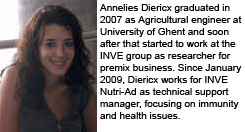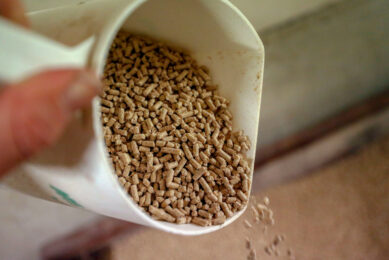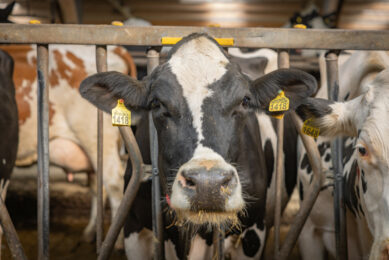Modulation of immune function via nutrition

Fuelled by the increased focus on the prevention of animal diseases, the boosting of the immune system via nutrition also gains more attention. Annelies Diericx and Jan van Eys explain how a mix of coated butyric acid, beta-glucans, MOS and a selection of botanical extracts can give the immune system the boost it needs.
By Annelies Diericx and Jan van Eys
More evidence has become available on the effect of the immune system on the major physiological events in the animals life and on the fact that nutrition can have an important influence on this, notably, at high levels of production (Scrimshaw, 1991). It is especially the immune system at the gut level –the interface between the feed and the animal – that can be influenced by nutrition. Of equal, if not greater importance, can be the micro flora that changes with different physiological stages and diets or feeding conditions. The gut contains at least 400 different species of bacteria constituting a total of approximately 1014 microbes and for that reason is confronted with a large array of feed antigens of microbial origin (Gorbach et al., 1967; Suau et al., 1999). As this is the place where the first line of defence should take place, the body has developed a special system, ‘the gut-associated mucosal immune system’, to prevent the proliferation, colonisation and invasion of harmful pathogens.
Immunity in the gut
In trying to develop feeding strategies to change the responses of the immune system, the focus of immunity should naturally be the gut associated immune system. The gut is certainly the primary entry point for potentially harmful organisms. Of particular concern in this respect is the mucosal tissue where a continuously regenerating mucus layer serves as protection against harmful micro-organisms or toxins. In this mucus layer a portion of the immune system is embedded, which prevents the uptake of antigens, micro-organisms or other foreign material by moderating a local immune response. Cells of this mucosal immune system are accumulated in specialised lymphoid tissue, named ‘Peyer’s Patches’. At those places in the gut where Peyer’s patches are present, a high density of M cells is found in the intestinal epithelium.
These specialised cells continuously sample the intestinal lumen and are able to transfer possible pathogens through the epithelium to dendritic cells that are able to present the antigens to the lypmphocytes, which will start an immune response. Clearly, it is important to maintain a healthy mucus structure in the intestine and realise that through specific nutritional modifications the gut associated immune system can be stimulated. Definitely, the gut associated immune system is extremely dynamic and evolves with the various physiological stages of the animal. At birth, the neonate’s mucosal immune system is relatively undeveloped. The development of these structures occurs concomitantly with the development of digestive structures and functions. Consequently, a rapid development of the animal’s digestive system after weaning is conducive to the early development of a good functioning immune system. Therefore, sufficient nutrient supply and colonisation of intestinal flora is needed.
Some physiological events or disturbances can lead to an impaired functioning of the gut immune system. These conditions are primarily: i) stress associated with high levels of production, ii) weaning or hatching, iii) parturition, iv) reduced feed intake, v) nutrition and vi) sub-clinical disease-status. When one of these events occurs, a nutrient supply that is in line with maximising the gut immune system is needed. Specific nutrients and additives can play a major role in this attempt.
Modulation via nutrition
There is a large array of nutrients that can have immune stimulating effects, primarily and in a general way the classical nutrients. However, the way in which specific components of these nutrients interact with the immune system is complex and not always fully understood. In the past, most nutrition research has focused on determining the nutrient requirements of livestock and rarely on the specific requirements of the immune system, despite the dominant effect that the immune system can have on nutrient requirements and utilisation (Klasing and Barnes, 1988). More recent research has concentrated on specific molecules and their effect on the immune system like yeast cell wall components, butyric acid and plant extracts.
Most of the research regarding the effect of yeast components on the animal’s immune system concerns the yeast strain Saccharomyces cerevisiae. The cell wall of this yeast contains 2 active components with each of them having a specific function: the inner cell wall consists of beta-glucans, mainly beta-1, 3 glucans, linked with beta-1, 6 glucans as side chains; the outer layer of the YCW consists of mannose-based carbohydrates, or mannan-oligosaccharides (MOS) (Lipke & Ovalle, 1998). The immune enhancing properties of the yeast cell wall components are mainly thought to be the result of the effect of the beta-glucans. These carbohydrates can bind to macrophages in order to enhance their phagocytic capacity. The function of MOS lays in binding pathogenic macro-organisms in order to prevent their attachment to the intestinal epithelium (Brown & Gordon, 2005; Oyofo et al., 1989). Yeast cell walls can be significantly dissimilar. The difference resides primarily in the composition of the cell walls and more specifically in the different structures of the carbohydrates fractions. Variations in structure of carbohydrate can lead to a completely different mode of action. Not only the type of yeast, but also the method of separating the yeast cell walls from the entire yeast cell has a major effect. These features should be taken into consideration when selecting yeast cell walls for specific functions.
Butyric acid
Another well studied molecule in enhancing the state of health in the animal is butyric acid. Butyric acid is a short chain fatty acid with specific properties and effects on the morphology of the intestinal epithelium.
Butyric acid helps to maintain and restore the integrity of the gut by stimulating cell proliferation and growth of the intestinal villi. Besides, butyric acid plays a role in controlling Salmonella colonisation by decreasing the expression of the virulence gene in salmonella (Van Immerseel 2004). In this way, Salmonella invasions through the epithelial cells will be reduced. Research showed that a product containing coated butyric acid, beta-glucans, MOS and a selection of botanical extracts showed i) inhibition of pathogen adhesion, ii) inhibition of pathogen invasion, iii) immune modulation and iv) tissue repair. A trial was conducted at the University of Bologna to test the efficacy of this product in weaned piglets. A group of piglets were challenged with (24 animals) and compared to an un-challenged group (12 animals). These two groups were subdivided in two groups, one receiving a control diet and another receiving the control diet supplemented with 2 kg/tonne of product. All the pigs were supplemented for 4 days (d 0 to d 3 mornings) with colistin, in order to ensure similar health conditions in the gut.
On d 7, each pig of the challenged groups received an E. coli K88 oral dose of 1, 5 mL of a 1010 CFU/mL solution. Non-challenged pigs received a placebo solution. Pigs were sacrificed on d 13 + 1. Before the E-coli challenge, K88-specific IgA was low. After the challenge, values changed significantly.
nnA clear effect was seen 5 days post-challenge (Figure 1), with stronger effects in blood serum, being observed in piglets in the product group. Also villus length and crypt width tended to be increased by the supplementation (Figure 2). In a broiler trial in Brazil (Centro de Pequisas em Animais do Brasil), one group of animals (240 birds) was challenged with lectins of Phaseolus vulgaris in the feed as an antinutritional factor to induce enteritis.
The other group (also 240 birds) was not challenged. These 2 groups were subdivided into 2 subgroups: one receiving the product at 2 kg/ton from 0-21 days and 1 kg/tonne from 22-42 days, and the other was not supplemented. It was clear that the addition of lectins to the diet severely reduced performance of the birds. But the group that was challenged and supplemented by the product showed a significant better performance, even better than the positive control group that was not challenged.
End body weight at 42 days was 3.2% higher (Figure 3) with an average daily weight gain that was 3.1% higher (Figure 4). This indicates that the product was able to neutralise the negative impact of the lectins in the diet.
Conclusion
Nowadays, immunity and ways to modulate the immune response are in the forefront of animal production concerns. Incorporation of specific nutrients to support the immune system should be considered as an integral part of feeding programs in order to improve animal health and well-being, productive capacity and production cost.
*Sentiguard
Source: FeedMix vol 17 nr 5, 2009











